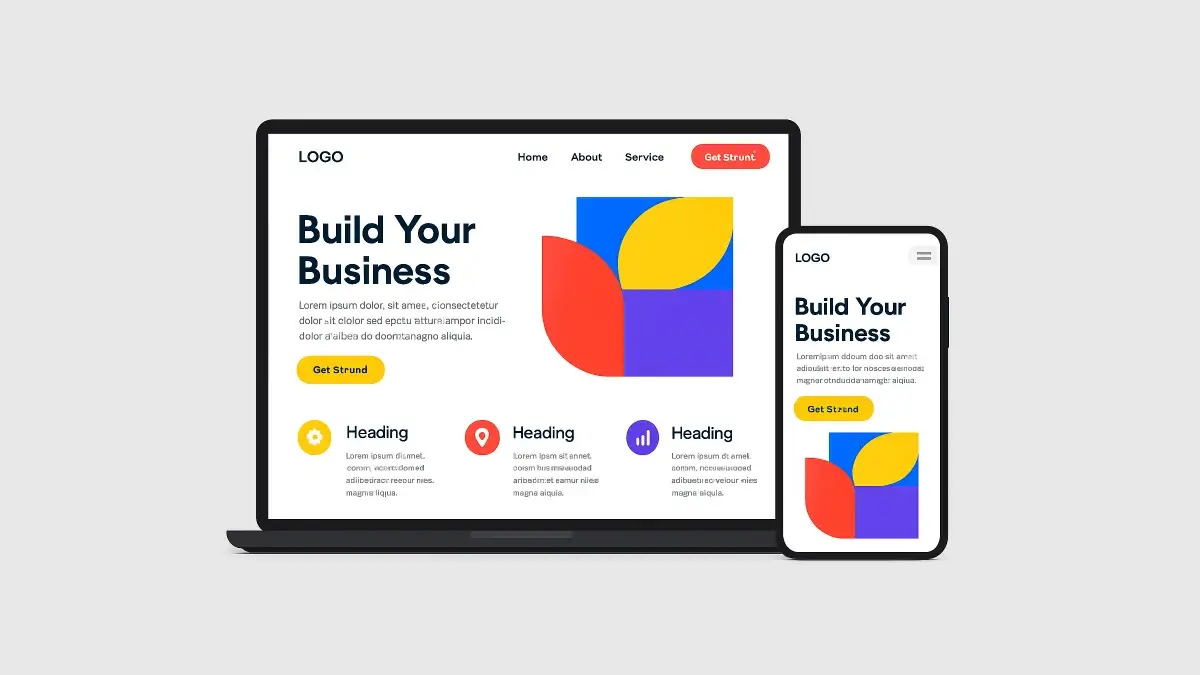Key Takeaways:
- Minimalist design and mobile responsiveness are fundamental for modern web appeal.
- Bold color use, asymmetrical layouts, and high-quality visuals make websites memorable.
- Interactive elements and fast loading times heighten user engagement and satisfaction.
- Consistent branding and a focus on user experience drive trust and conversions.
Table of Contents:
- Embrace Minimalist Design.
- Utilize Bold Colors and Gradients.
- Implement Asymmetrical Layouts.
- Optimize for Mobile Responsiveness.
- Incorporate High-Quality Visuals.
- Enhance User Experience with Interactive Elements.
- Ensure Fast Loading Times.
- Maintain Consistent Branding.
- Conclusion.
Making a memorable impact online begins long before any words are read. In today’s highly competitive digital world, a visually compelling website is essential for attracting visitors, establishing credibility, and cultivating loyal followers. At Avenue 25, design goes beyond appearances. The team focuses on creating websites that clearly tell your brand story, guide users effortlessly, and encourage meaningful engagement. Good design is not just about looking appealing; it is a strategic tool for differentiating your site from competitors and setting the stage for long-term growth.

With audiences accessing content across a variety of devices, maintaining a user-friendly and adaptive website is crucial. Effective web design blends aesthetic appeal with intuitive navigation, encouraging higher engagement and boosting conversions. In a market full of options, your website must instantly communicate your value, reliability, and unique personality.
Embrace Minimalist Design.
Minimalism in web design is all about clarity. By stripping away non-essential elements, you allow your content and branding to stand out. Clean lines, ample white space, and a streamlined layout direct attention to what matters: your message and your call to action. Businesses seeking professional web design Phoenix often embrace this approach, as it not only aids comprehension but also reduces cognitive overload for visitors, making their experience more pleasant and effective.
Utilize Bold Colors and Gradients.
Color is a powerful communicator. Strategic use of bold colors and gradients can make your site visually dynamic while subtly influencing user emotions. A splash of vibrant color can draw a visitor’s eye directly to important navigation or call-to-action buttons. Just as importantly, gradients allow for fresh, modern aesthetics and smooth transitions that lend depth and warmth to backgrounds or hero images.
Implement Asymmetrical Layouts.
Move beyond the rigidity of the grid. Asymmetrical designs create visual intrigue by introducing unexpected alignment and variable element sizing. This approach not only feels modern but can generate a sense of motion and creativity. It’s a clever way to showcase product features, team members, or testimonials without overwhelming the user. However, balance is essential; every diverging element should have a purpose, contributing to a harmonious—if unconventional—user interface.
Optimize for Mobile Responsiveness.
Mobile traffic now accounts for more than half of all web traffic worldwide. A site that fails to adapt to smartphones and tablets risks alienating a significant portion of its audience. Responsive design ensures content scales seamlessly across devices, maintaining usability and aesthetics on every screen. Features such as touch-friendly buttons, readable text, and flexible images are non-negotiable. Consistently testing your site’s mobile adaptation will improve both search rankings and user satisfaction, paving the way for more interactions and conversions.
Incorporate High-Quality Visuals.
Imagery speaks volumes. High-resolution photos, custom graphics, and engaging illustrations help humanize your site and set the tone for brand interaction. Authentic, original visuals are proven to foster a deeper connection with visitors, making your business more relatable and memorable. Professional-grade images — whether of your products, team, or processes — support transparency and trust. Avoid generic stock photos whenever possible; prioritize images that reflect your company’s true identity and culture.
Enhance User Experience with Interactive Elements.
Interactive features such as animations, quizzes, chatbots, or explainer videos can enhance user engagement. These elements not only entertain and inform but also encourage repeat visits and longer session times. Small touches—hover effects, clickable infographics, or animated progress bars—signal a thoughtfully crafted site. Interactivity keeps users immersed, promotes discovery, and can even shorten the sales funnel by more directly engaging prospects where they need answers most.
Ensure Fast Loading Times.
No design, however striking, can compensate for poor performance. Visitors expect near-instant loading; delays of even a second can dramatically increase bounce rates and diminish the effectiveness of your calls to action. For a deeper look at how website speed affects user behavior, check out this Business.com article. Optimizing images and leveraging browser caching are crucial for speed. Faster sites are rewarded not only with lower abandonment rates but also with improved search rankings, making performance optimization an investment with multiple returns.
Maintain Consistent Branding.
From the logo in your header to the typography on every subheading, brand consistency is the backbone of credibility. Using a unified color palette, repeating key design motifs, and ensuring synchronized tone and messaging throughout your content means every page contributes to a cohesive experience. Such consistency is vital for recognition and trust, especially as consumers bounce between platforms and devices during their web journey.
Conclusion.
Building a visually striking online presence is both an art and a science. Prioritizing minimalist layouts, impactful colors, dynamic structures, and responsive elements creates sites that are memorable and user-focused. As you continue refining your digital presence, remember that partnership—with trusted experts and your own audience—is the most sustainable way forward. Thoughtful web design is the cornerstone of digital growth and connection.
Leave a Reply